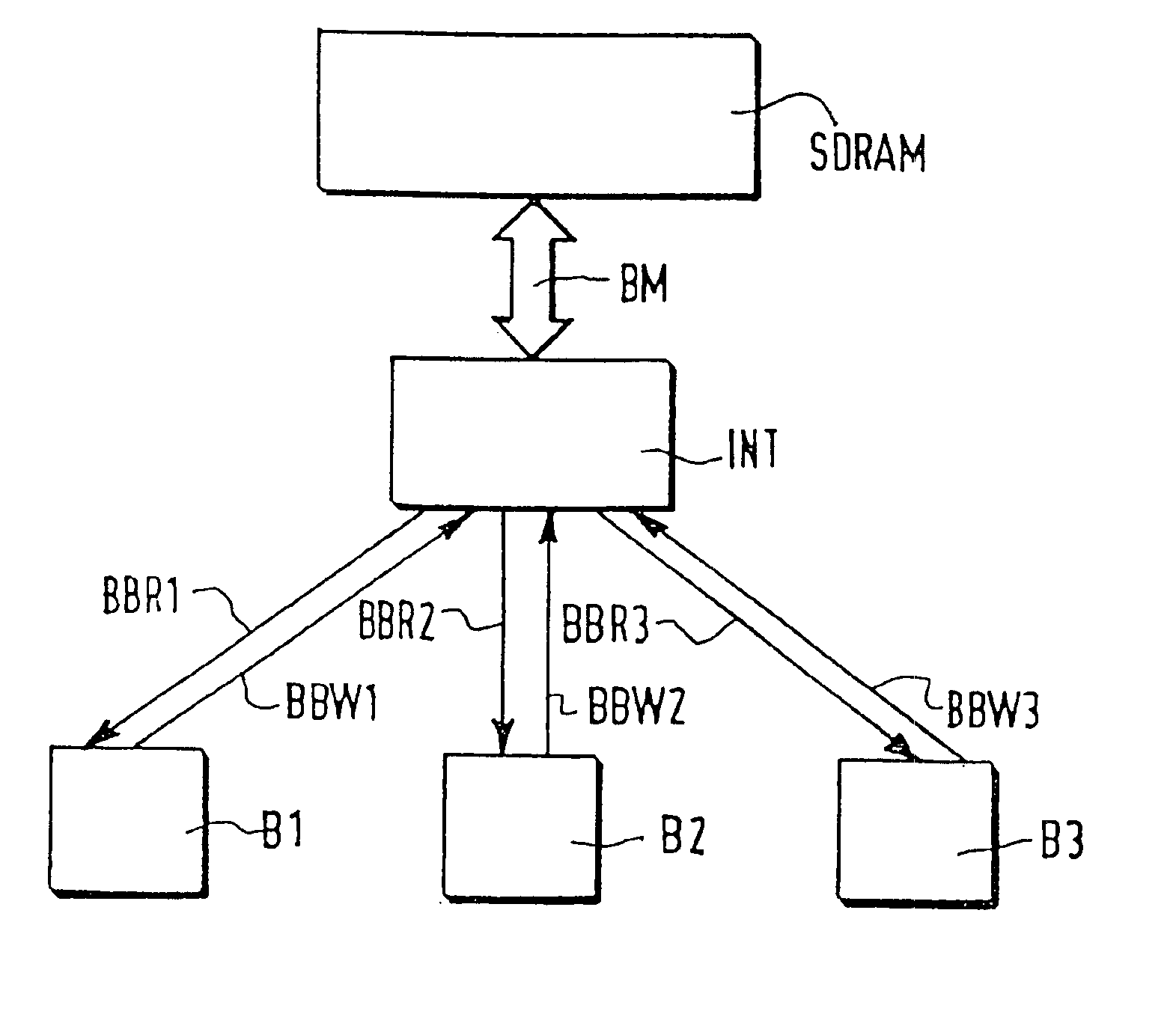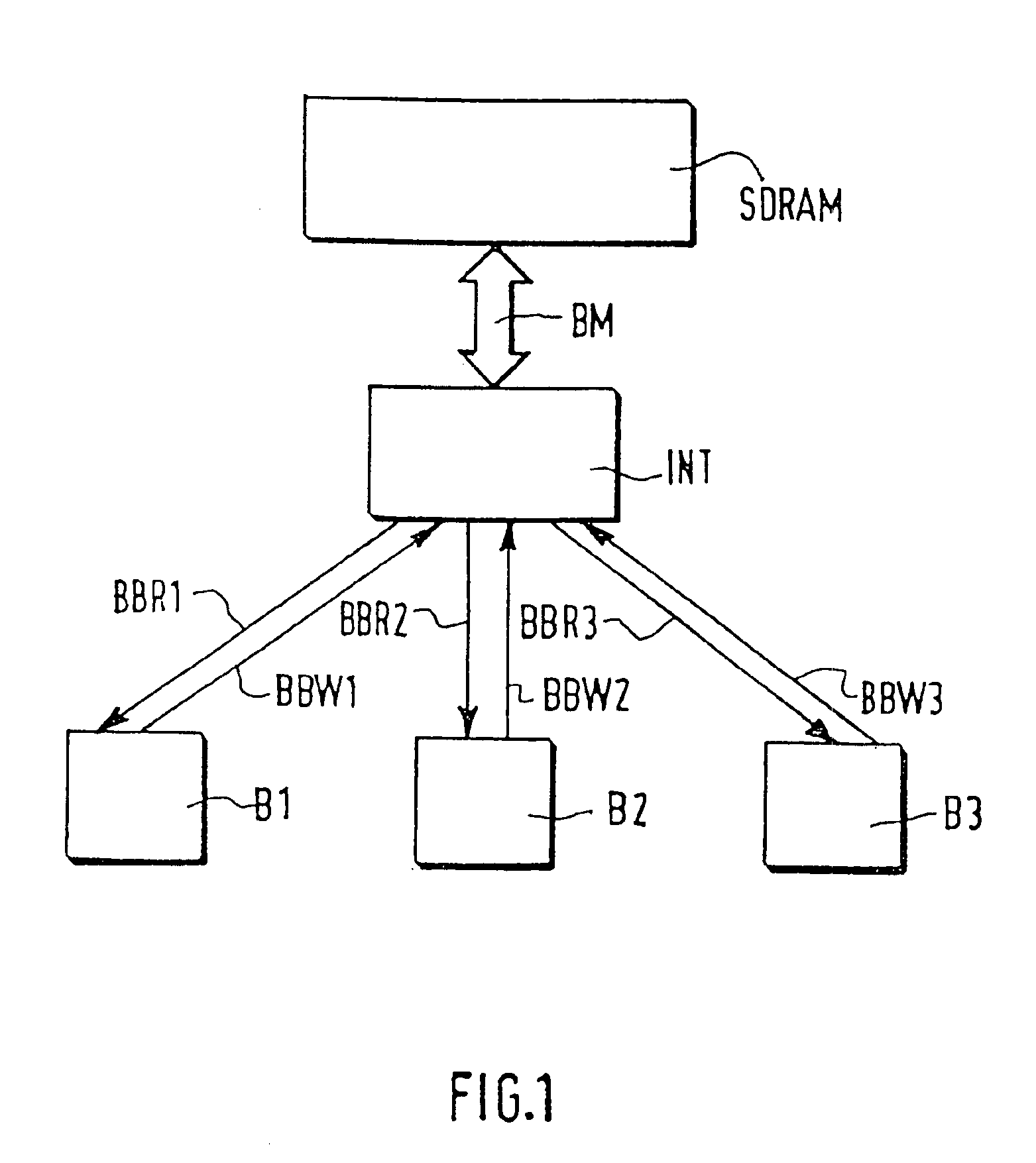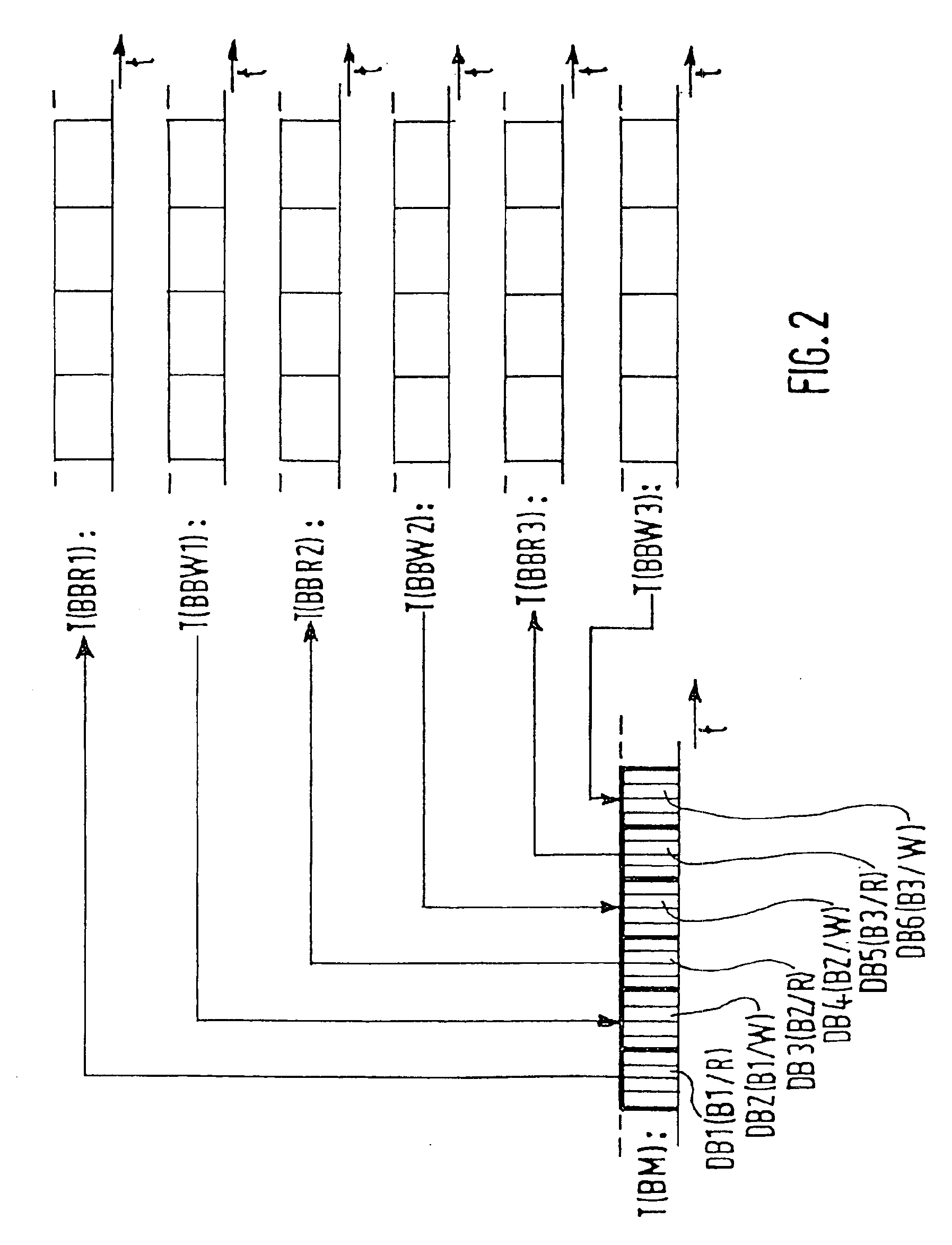Access scheme for a collective resource using a plurality of states
a collective resource and access scheme technology, applied in multi-programming arrangements, data conversion, instruments, etc., can solve the problems of increasing memory according to the cost of collective resources, and achieve the effect of facilitating system design, moderate storage capacity, and accessing capacity
- Summary
- Abstract
- Description
- Claims
- Application Information
AI Technical Summary
Benefits of technology
Problems solved by technology
Method used
Image
Examples
Embodiment Construction
The following remarks relate to the reference signs. Similar entities bear identical reference letters in all the Figures. A plurality of similar entities may appear in a single Figure. In that case a numeral is suffixed to the reference letters in order to distinguish between similar entities. The numeral or suffix may be omitted for convenience. This applies both to the description and to the Claims.
FIG. 1 shows a data processing system. It comprises a collective memory SDRAM, a memory interface INT, and three data processing units B1, B2 and B3. These data processing units will be referred to hereinafter as “units”. Each unit B is connected to the memory interface INT via a private read bus BBR and a private write bus BBW. Each private read bus BBR and each private write bus BBW is dedicated to a given unit B. The memory interface INT is connected to the collective memory SDRAM via a collective bus BM.
The general operation of the data processing system is as follows. On request t...
PUM
 Login to View More
Login to View More Abstract
Description
Claims
Application Information
 Login to View More
Login to View More - R&D
- Intellectual Property
- Life Sciences
- Materials
- Tech Scout
- Unparalleled Data Quality
- Higher Quality Content
- 60% Fewer Hallucinations
Browse by: Latest US Patents, China's latest patents, Technical Efficacy Thesaurus, Application Domain, Technology Topic, Popular Technical Reports.
© 2025 PatSnap. All rights reserved.Legal|Privacy policy|Modern Slavery Act Transparency Statement|Sitemap|About US| Contact US: help@patsnap.com



